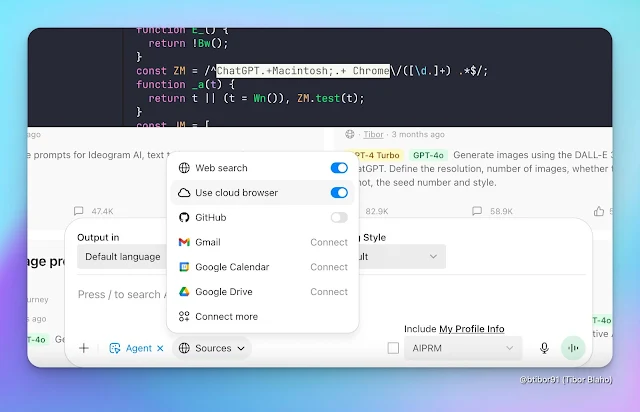
Unlike traditional browsers, the design points to features such as automatic tab selection, a custom new tab page, and browsing carried out directly by ChatGPT. These ideas build on the existing Agent mode inside ChatGPT. That mode already runs in a cloud setup on Linux, where it can perform requests such as creating documents or presentations using online material.
At present, Agent mode only interacts with a remote virtual browser. It processes screenshots, clicks links, and fills out forms in that environment. Recent details suggest OpenAI is preparing a second route. The system may soon switch between the older cloud option and a new local browser built by the company itself. References to a “Use cloud browser” toggle and traces pointing to macOS confirm the direction of development. Earlier reports also indicated that the firm wants to keep more user activity within a ChatGPT-style interface rather than pushing people to open websites one by one.
Cheaper Subscription Plan in Testing
Work is also underway on pricing. OpenAI is testing a plan called ChatGPT Go, positioned as a lower-cost tier. The dashboard for some accounts now shows a Try Go button, linked to a payment request of four US dollars. The same option appears in euros and pounds, which makes clear that the company is preparing a broader release.

Image: @btibor91 / X
When first spotted, the cheaper plan looked tied to India. The new currency listings point instead to global availability. If the service remains at four dollars or its equivalent, it could draw interest from users who find the higher tiers out of reach.
New Voice Controls and Models
Another area of focus is voice mode. Hidden settings now allow users to control the speed of speech, with sliders ranging from half pace to double pace. The adjustment gives more freedom in how conversations sound, whether slower for clarity or faster for quick updates.

There is also a custom instructions prefix for voice interactions. This lets the system remember a user’s preferred approach, so instructions do not have to be repeated at every turn.
Alongside these changes, the model selector has been updated. Subscribers can now see GPT-5 options labeled high, fast, and auto. Access to GPT-4o has also been restored for paying accounts.
Subtle Personality Shift in GPT-5
OpenAI has also started adjusting how GPT-5 responds in conversations. The company says it has made the model warmer and more approachable after receiving feedback that earlier versions felt too formal. The difference is intended to be subtle, with responses sometimes starting with phrases such as “Good question” or “Great start.” Internal testing showed no increase in flattery compared with the previous GPT-5 personality. The change is rolling out gradually and may take up to a day to reach all users.
The update has prompted mixed reactions online. Some users have asked the company to keep GPT-4o permanently available, saying they prefer its colder and more restrained style. Others expressed concern that ChatGPT should focus on delivering clear information without adding unnecessary warmth.
Notes: This post was edited/created using GenAI tools.
Read next: YouTube Stands Out as America’s Favorite Social Platform
